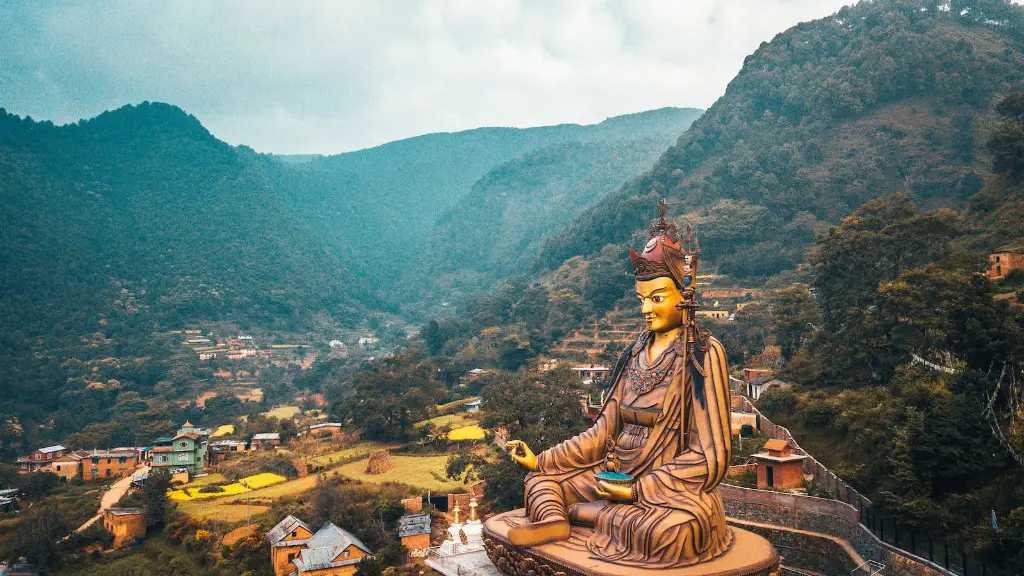Hinduism has long been associated with centuries of tradition, and part of this tradition includes the teachings about the four stages of life. Hindus have four distinct stages of life, each representing a different stage of understanding of self and existing in harmony with the fundamentals of life. These four stages are the Brahmacharya, Grihastha, Vanaprastha, and Sannyasa.
Brahmacharya
The first stage of life is called Brahmacharya. This stage is encountered between the age of four to twelve where it is believed that the spiritual growth of a person occurs. During Brahmacharya, children focus on learning about their culture, identity, and spiritual practice, as well as any practical skills the have chosen to develop in the upcoming adult stages of their life. The main focus of this stage is for the individual to learn self-discipline and gain skills and knowledge which will allow them to succeed in later stages in life.
Grihastha
Grihastha is the second stage, signifying adulthood and marriage. Those in the Grihastha stage of life embrace the pursuit of material wealth and a family. This period of life allows individuals to apply the skills and knowledge acquired in their youth and turn it into wealth. Additionally, they are expected to build ties within their community and stay socially connected. With their pursuits, they bring knowledge and understanding to the world, as well as establishing order and principles of karma.
Vanaprastha
The third stage is Vanaprastha, which is the stage of retreat. During this stage, individuals detach themselves from earthly pursuits and instead focus on spiritual enlightenment and knowledge. Vanaprastha is a time for transformation and maturing of the soul as individuals embrace a life of meditation and contemplation. Here, individuals are expected to spend time away from society–in forested and peaceful settings–in order to connect with nature and become more intimate with their spirituality.
Sannyasa
The final stage of life is Sannyasa. This stage is referred to as the time for eternal liberation, where individuals come even closer to their spirituality and use the knowledge they have acquired throughout their lifetimes to reach a higher and more divine state of being. This period of life is characterized by a constant set of rituals and daily practices, with the individual becoming a servant of God and fully surrendering to the divine and eternal truth. This truth is said to bring onenirvana or the ultimate state of liberation of the soul.
What is the Core Principle Of Hinduism?
The core principle of Hinduism is to uphold the worship of a single God whilst having the ability to manifest Him in different ways. Hindus are encouraged to personalize their spiritual practice and form relationships with personal, individual deities. Additionally, Hindus seek to develop an awareness of the universe and its energies, which form the basis of the four stages of life.
Reaching Enlightment
The ultimate purpose of Hinduism is to reach enlightenment and achieve moksha. This is an individual’s liberation from the cycle of birth and death, allowing them to transcend into a higher state of consciousness and to be free from suffering and the grips of karma. Hence, the pursuit of harmony, knowledge, and worship of the divine forms the basis of the four stages of life in Hinduism.
The Principles Of Ahimsa
Another important facet of Hinduism is the principle of ahimsa, which means ‘nonviolence’ in Sanskrit. Hindus uphold this principle in their daily lives by avoiding acts of physical, verbal, and mental harm. This principle is especially important in the Vanaprastha stage, as individuals strive to remove themselves from any source of violence and instead pivot towards a life of spirituality and service.
Leading A Spiritual Life
Hinduism also stresses on the importance of following a spiritual life, where individuals are encouraged to participate in spiritual practices such as prayer, meditation, fasting and vows of silence. This spiritual practice allows one to develop true understanding and awareness of the self and the universe. By engaging in such activities, one is able to harness the power of their mind and soul, deepening their inner connection to the divine.
Respecting Nature
Hindus are taught to preserve nature, showing respect to all forms of life as they recognize the divinity present in all living things. This respect is further reinforced in the Vanaprastha stage when individuals take a respite in nature, as they strive to connect with its energy and catch glimpses of the divine. Additionally, Hindus are also taught to respect and be grateful for the gifts of nature, further stressing the importance of environmental conservation.
Living A Life Of Dharma
Ultimately, living a life of Dharma- one of righteous action according to one’s religious beliefs, social obligation and moral duty- is a central theme of the four stages of life in Hinduism. Dharma is the concept of living life in accordance with the divine and is integral to each of the four stages. This concept teaches individuals how to do good, using their inherent skills and wisdom in an ethical manner and with the right intention.
Power Of Redemption
Ultimately, the four stages of life in Hinduism illustrate the power of redemption and striving towards enlightenment. It is believed that individuals subscribed to Hinduism have the opportunity to progress through each stage of life, and use each of their experiences to benefit the world. By living life in accordance to the teachings of the four stages, Hindus can harmoniously reach their ultimate goal of reaching moksha.

